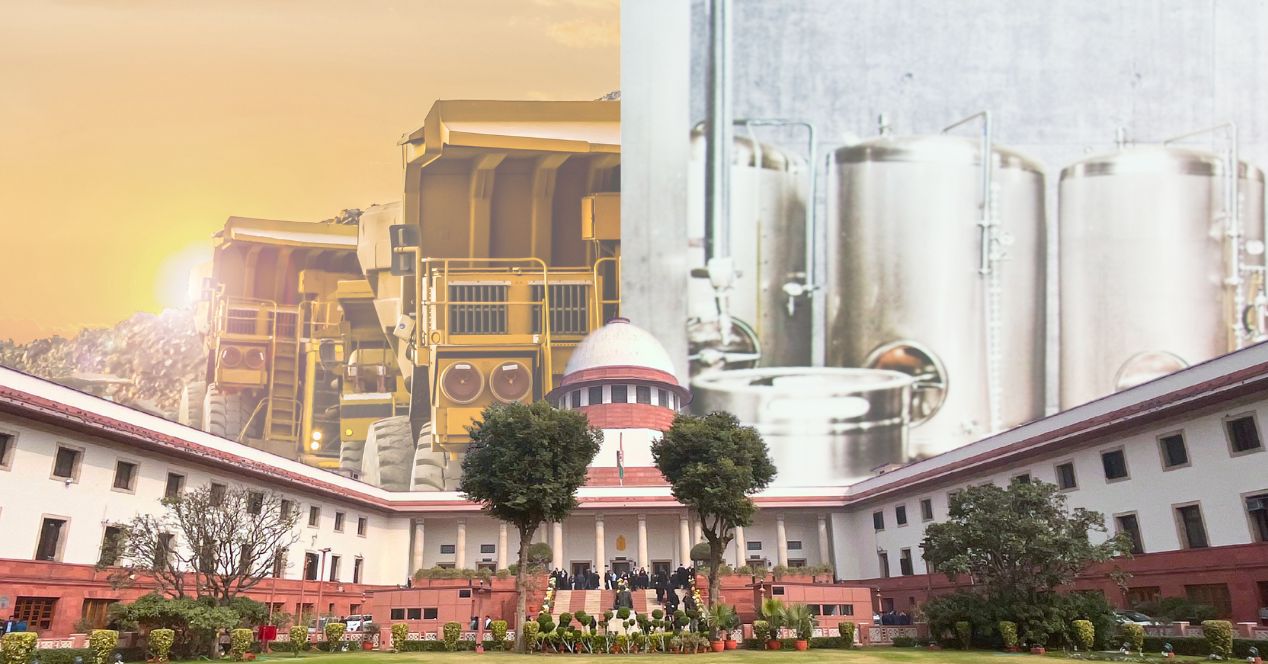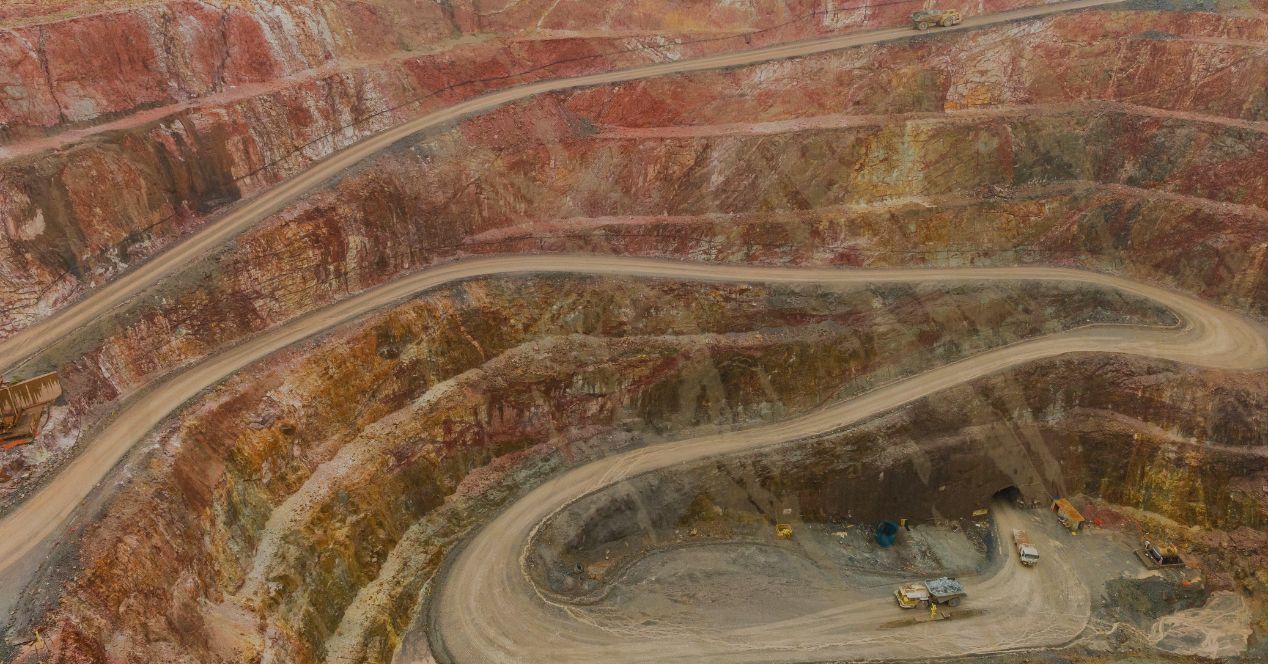State’s power to tax mines and minerals: Judgement Matrix
Nature of royalty paid by mine leaseholdersJudges: D.Y. Chandrachud CJI, Hrishikesh Roy J, A.S. Oka J, B.V. Nagarathna J, J.B. Pardiwala J, Manoj Misra J, Ujjal Bhuyan J, S.C. Sharma J, A.G. Masih J
On 25 July 2024, a nine-judge Bench of the Supreme Court held that state governments have the power to collect tax on mines and minerals. The majority judgement was authored by Chief Justice D.Y. Chandrachud on behalf of himself and seven other judges. Justice B.V. Nagarathna dissented.
The case concerned the extent of states’ power under Entry 50 of List II which says that state governments can tax mines and mineral rights subject to Parliamentary laws on “mineral development.” The Union government argued that the Mines and Minerals (Development and Regulation) Act, 1957 (MMDR Act) was one such law which diluted the state government’s power to impose such a tax. States claimed that the Act does not expressly say that it cannot impose a tax.
Another issue at play is the “nature of royalty” collected under the MMDR Act. Mining companies argued that the royalty, also collected by state governments, is itself “akin to tax.” This interpretation would mean that states cannot collect any tax. States such as Jharkhand, Andhra Pradesh, Uttar Pradesh, and Odisha strongly challenged this contention, arguing that royalty does not fulfil the basic characteristics to be determined as a tax. Mining companies are concerned that they will have to pay hefty taxes to states if royalty and tax are held to be distinct.
In India Cements v State of Tamil Nadu (1989), a seven-judge bench held that “royalty is a tax” under the MMDR Act. This reasoning was muddied in 2004, when a five-judge bench in Kesoram Industries v State of West Bengal, held that India Cements made a typographical error in declaring that royalty and tax were on the same footing. The clashing decisions resulted in the present case before the nine-judge bench. The nine judges were also tasked with examining the correctness of these two judgements.
In our judgement matrix, we capture the key decisions made in the case and the reasoning offered by the Bench.
Background
On 28 December 1957, the Union Government enacted the Mines and Minerals (Development and Regulation) Act, 1957 (‘the Mines Act’). Under this, the control of mines and minerals was brought under the ambit of the Union. Section 9 of the Act stated that mining lease holders have to pay royalty to the Union government for any “mineral removed or consumed” from the leased area.
On 19 July 1963, the Tamil Nadu government granted a mining lease to India Cement Ltd., a public limited company for extracting limestone and kankar. The royalty was fixed under the Mines Act. Meanwhile, under Section 115(1) of the Madras Panchayat Act, 1958 (‘Madras Act’), imposed a cess on the land revenue paid to the Union Government.
India Cement challenged this provision in the Madras High Court, claiming that the Tamil Nadu government lacked the legislative competence to levy cess on royalty. The Madras High Court upheld the law.
India Cements appealed against the decision in the Supreme Court. On 25 October 1989, in India Cement Ltd v State of Tamil Nadu, a seven-judge bench of the Supreme Court held that the royalty was indirectly related to the minerals extracted. The decision found that “royalty is a tax” under the Mines Act. A cess on royalty being a tax on royalty was beyond the State’s legislative competence since the Union’s Mines Act “covers the field.”
On 15 January 2004, a five-judge bench of the Supreme Court, in State of West Bengal v Kesoram Industries Ltd (‘Kesoram Industries’), by 3:2 majority, held that there had been a grave, “inadvertent” clerical error in the text of India Cements. The majority judgement held the Bench had mistakenly written that “royalty is a tax” while meaning that “cess on royalty is a tax.” They noted that India Cement had relied on case laws which had clearly stated that royalty was not a tax.
The Court recorded that this “typographical error” had thrown jurisprudence in disarray. They clarified that royalty was not a tax since even a private owner of the property, who is not entitled to charge tax, could charge royalty.
Meanwhile, in May 1999, a writ petition was filed challenging the Bihar Coal Mining Area Development Authority (Amendment) Act, 1992. It imposed additional cess and taxes on land revenue from mineral bearing lands. This would be the genesis of a case called Mineral Area Development Authority v Steel Authority of India, which would eventually lead to the creation of the current nine-judge Constitution Bench. On 7 April 2004, the Court referred Mineral Development Area Authority, to a three-judge bench given the “far reaching implications” of the constitutionality assessment.
On 30 March 2011, a three-judge Bench consisting of Justices S.H. Kapadia, K.S. Panicker Radhakrishnan and Swatanter Kumar stated that there was a “prima facie” conflict between the decisions in India Cements and Kesoram Industries. They referred the matter to a nine-judge bench.
This is the second-oldest pending Constitution Bench decision in the Supreme Court and would have been pending for 9044 days by the first day of hearing on 27 February 2024.



